| Umělec 2002/4 >> Interpreters of a state in time (interview with Dušan Mandič and Roman Uranjek: members of Irwin) | Просмотр всех номеров | ||||||||||||
|
|||||||||||||
Interpreters of a state in time (interview with Dušan Mandič and Roman Uranjek: members of Irwin)Umělec 2002/401.04.2002 Vjera Borozan a Michael Ivaniškin | q & a | en cs |
|||||||||||||
|
Neue Slowenische Kunst was formed in the early 1980s in Slovenia as an umbrella organization of separate but thematically related artistic groups, including the music group Laibach, the theater group Scipion Nasice Sisters, the design group New Collectivism, which caused a scandal when they remade a Nazi poster that subsequently won a national competition, and the visual arts group Irwin, which hangs in opposition between western art practices and the eastern ideology of social realism. Irwin has demonstrated a recent connection with the Russian avantgarde, and through their strategic acts they seek to understand their position in an artistic field that finds itself in the gray zone of political action and aesthetic indifference. In the 1990s NSK established its own “State in Time” and began organizing various embassies and creating passports for its citizens. Irwin re cently had an exhibition at new HOME Gallery in Prague (see Gallery pg. 22)
The art group Irwin has been around since 1983. Since then you have worked and made art collectively. Have you ever regretted giving up solo careers as artists? Roman: I only began exhibiting when I joined Irwin, but Dušan had several solo exhibitions between 1979 and 1981 in what was then Yugoslavia. He exhibited in Slovenia too, in the Ljubljana gallery Škuc. Dušan: Yes, but I definitely never regretted working in the group. But a year later in 1984 you joined up with the music group Laibach and the theater troupe Scipion Nascice Sisters and established Neue Slowenische Kunst. Aren’t you overdoing it a bit making so many groups? Dušan: Laibach began in 1980 and we knew them at that time. The theater group Sestry Scipiona Nascice was formed in the same year as Irwin. We thought about how groups like Bauhaus or Fluxus operated. With this in mind the unified group NSK was formed. Each of us operates in separate fields, Laibach specializes in music and politics, Sestry Scipiona Nascice in theater and religion and Irwin are chroniclers. What connects us is the thought of an eclectic nation. All of the small eastern nations are eclectic, because they can only take on, de facto, impulses from the large nations, like the Italians or the French. This specific type of eclecticism that we work with we called emphasized eclecticism. The common platform of the NSK group is the search for identity, which is likewise founded on the discovery of specific forms. Roman: All Slovenian artists in the past made art using international forms, understandably somewhat later. International contemporary forms were applied to Slovenian specifics, for instance the Slovenian painter Ivan Grohar (1867 – 1911) painted canvas that were indistinguishable from Monet. This was also the case with the Slovenian informel… Besides the three groups that you talked about, NSK also has the designing group Novi Kolektivizm and Department of Clean and Applicable philosophy. Concerning the Novi Kolektivizm, much has been said about them in relation to the poster scandal for “Youth Day.” Dušan: Novi Kolektivizm won a poster competition in 1987. Roman Uranjek is also a member. As a basis for the concept we used a poster by Richard Klein called The Third Reich. We only altered the symbols of one totalitarian artwork for others: the Nazi eagle for the pigeon, a specific German mountain for Slovenia’s Triglav, the swastika for the red star and so on. Our idea was very clear: the art of communism, fascism or nationalism is basically the same stuff, onedimensional art serving to control the masses, showing the little legs where they walk. But real art has to have more dimensions and levels of interpretation. Roman: There were a number of generals in the commission that really liked the work. It wasn’t abstract like the submissions by others and the blonde boy [in the picture] looked like a Slovene. Slovenes are also blonde. At first nobody noticed anything. Only after some time Nikola Grubišić from Belgrade found out and the whole affair came out. It was a weird coincidence… But that complicated everything. Didn’t you have problems? Well, we were interrogated, our flats were searched and of course they threatened us. In the end we only got five years probation. We were lucky that we lived in Slovenia, in other parts of Yugoslavia at that time we would not have been let off so easily. The “Citizens’ Society” helped us [an umbrella organization for Democracy and a movement in Slovenia in the 80s] and even more [Slovenian sociologist] Častko Močnik, who organized propaganda in our defense. In Slovenia at that time the term retroavantgarde was used for the first time. It appeared in the newspapers in connection with the right of the artist to have freedom in his work, and in this new context we were saved. Your work is very reminiscent of Joseph Beuys. He was the first artist to begin to bring back to life traumas from the past. Did you ever meet him? Roman: Yes. It was in 1985, Beuys had an exhibition in London, so we looked him up. He was very kind and open to us. We spoke together for maybe an hour and then we showed him our work. He immediately understood the concept and was very well informed about the situation in Slovenia. We asked him if he would like to do a group project and he came up with the idea to sow seeds in the Alps. The motif of sowing seeds had long attracted us. It was extremely popular in the 19th and beginning of the 20th century in France and also in Slovenia. There’s one excellent portrait of sowing by Grohar from 1907. By the way, it was the first picture painted in Slovenia from a photograph. This theme also interested us because it is normally assumed that for Modernism the motif is not important. We made use of this idea in our 1991 project — an exhibition of 23 artists who from different time periods worked with the motif of sowing. This shows that even Modernist works are created with motifs in mind. And another reason why the motif of sowing is so important — from a nationalistic point of view. Grohar’s portrait of seed planters was adored at that time in Slovenia. And often times seed planters appear in Nazi kunst, or fascist art. Dušan: The Nazi connections are even why we named the group Irwin. In 1984 members of Laibach were prohibited from using their name, which is a German translation of the name of the city Ljubljana. Evoking the period of the Nazi occupation bothered the censors. So we chose the English name Irwin, which has international, and never national, connotations. You reference a number of artists in your work, but by far Malevič gets the most attention. Why him specifically? Dušan: Mostly because of eclecticism. In 1913 Malevič wrote that the artist was always in the service of ideology. Whether it was religion and you painted icons or worked on decorating churches or served the king, whose portrait you painted and whose battle scenes you depicted. Of course when Malevič painted a square or a cross, it was a gesture, the materialization of a pure form and not an illustration. Malevič is very important to us. He was one of the pioneers of abstraction in the avantgarde. Our sphere of activity is also defined by Fontana and Klein. The action Black Square on Red Square also carried a lot of meaning for us and had a rich context. And what role does context play in your work? Roman: For us, and also in general, the context is more important than the artistic quality of the work. It is bound to the time and place from which it comes. For instance Grohar’s canvases are artistically high quality, but from the perspective of the time and place of origin their value is much lower than the value of Monet’s pictures. In fact, absolute quality doesn’t exist. Quality only has meaning in a certain context. So that’s why you often use motifs of Social Realism and German fascism in your art work. Dušan: We use aspect of both kinds of art because both use similar tactics. But we never experienced Nazi art ourselves. We always act in a wider context, as opposed to avantgarde art or Social Realism. The way of thinking about the art language interests us. Roman: Even abstract expressionism and action painting were states of favoritism. I recently read an interesting book from 1987 [Serge Guilbaut: How New York Stole the Idea of Modern Art], where it is described in detail how the CIA supported the first Pollock exhibition in Paris. At first there hadn’t been enough money for the exhibition, thereby launching operation “Long Rope,” which guaranteed the needed finances. Only the artist had no idea this was going on. It was in the interest of the United States to show Europe and its art center the cultural victory of the US. How did you come up with the idea to create the world embassy NSK? Dušan: The fall of the Berlin wall in 1989 marked the end of the polarity of the East (communism) and West (capitalism) and we were working between these polarities. Suddenly the break came and we had to reflect on our new situation. So the state NSK was formed, a state in time. We began to build an embassy and got the idea to make passports. At our first action in Moscow a number of artists from the former Yugoslavia had problems traveling and our passports allowed them to do this. We got away with it. But the polarity between the East and the West goes on. Do you consider yourselves eastern artists? Dušan: Yes, definitely. Just now we are making Art East Map. Roman: We had the notion that were at the center of the imaginary crises between the East and the West. And in this context it’s necessary to add that the interpretation of art comes from western countries. Other than these reasons, we were striving to reconstruct history and, as we said, the 90s were considered differently in the beginning because of the changes in the political system. Even we had to change legally. In the 80s we were aimed our actions towards socialism. In the 90s the situation was something else. NSK of the 80s transformed into NSK of the 90s and state became autonomous artists. Not only Slovenian but also international — which explains the English name. Dušan: When we exhibited in the Venice Biennial in 1993 in the Slovenian pavilion, we asked if we could make our own NSK state pavilion and they let us. Irwin represented the NSK state in time and Marjeticu Ptrć got the Slovenian pavilion. You consider yourselves artists, but you often present yourselves as “interpreters” between the East and the West. Several times you have stood up in defense of Russian artists. Dušan: For us the thinking of the East is very important, just like the reconstruction of history and our retroavantgarde progress. During the 80s we were mainly oriented towards the USA and approximately after 1992 towards Russia. In 1996 we made the project From the East to the West Side, where we traveled with three Russian artists through the US. At that time We contacted Viktor Misiano. We wanted to put on a public project, a better form of presentation than an exhibition. When we placed the black square on Red Square and opened the Moscow embassy, it made the main news broadcast on Russian television. It was great. But recently more than just reflecting on the relationship between the East and the West, you are focusing on the relationship between the artist and the viewer. Is this also true of your project Irwin Live? Dušan: The main idea was to show the difference between the perceived work in the public space and the gallery. Artists are only in the gallery in view only for a short time after the opening and so we decided that we would stay longer. And we would show our view, how we see our work. So we became linked with our current expositions. Roman: It was difficult, we couldn’t drink beer all day. However, now you make work with political content. The NSK Guard cycle even had one project in Prague with soldiers from the Czech Army. Dušan: The army is basically a litmus test of democracy and society. The project NSK Guard is a document of a real situation in which a certain society finds itself. Our first action in Tirana and also the last two in Cetini and Kosovo’s Pristina from this point of view were the most successful. They were characteristic of a certain historical moment.
01.04.2002
Рекомендуемые статьи
|
|||||||||||||
|
04.02.2020 10:17
Letošní 50. ročník Art Basel přilákal celkem 93 000 návštěvníků a sběratelů z 80 zemí světa. 290 prémiových galerií představilo umělecká díla od počátku 20. století až po současnost. Hlavní sektor přehlídky, tradičně v prvním patře výstavního prostoru, představil 232 předních galerií z celého světa nabízející umění nejvyšší kvality. Veletrh ukázal vzestupný trend prodeje prostřednictvím galerií jak soukromým sbírkám, tak i institucím. Kromě hlavního veletrhu stály za návštěvu i ty přidružené: Volta, Liste a Photo Basel, k tomu doprovodné programy a výstavy v místních institucích, které kvalitou daleko přesahují hranice města tj. Kunsthalle Basel, Kunstmuseum, Tinguely muzeum nebo Fondation Beyeler.
|







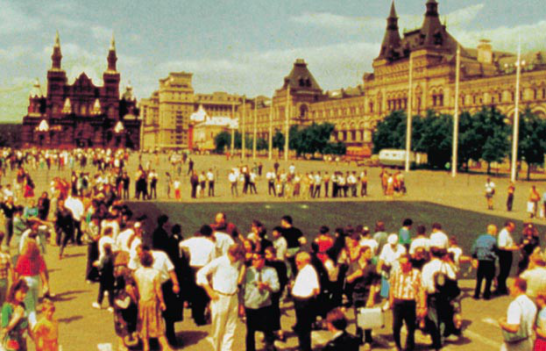








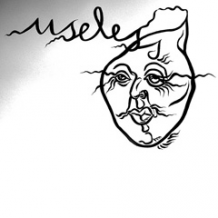






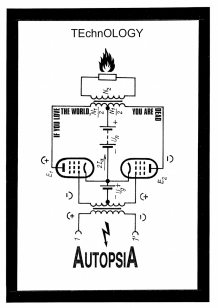




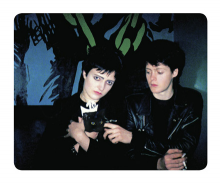
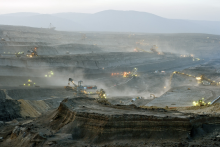
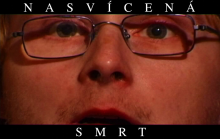
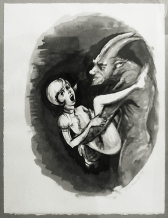


 New book by I.M.Jirous in English at our online bookshop.
New book by I.M.Jirous in English at our online bookshop.
Комментарии
Статья не была прокомментированаДобавить новый комментарий